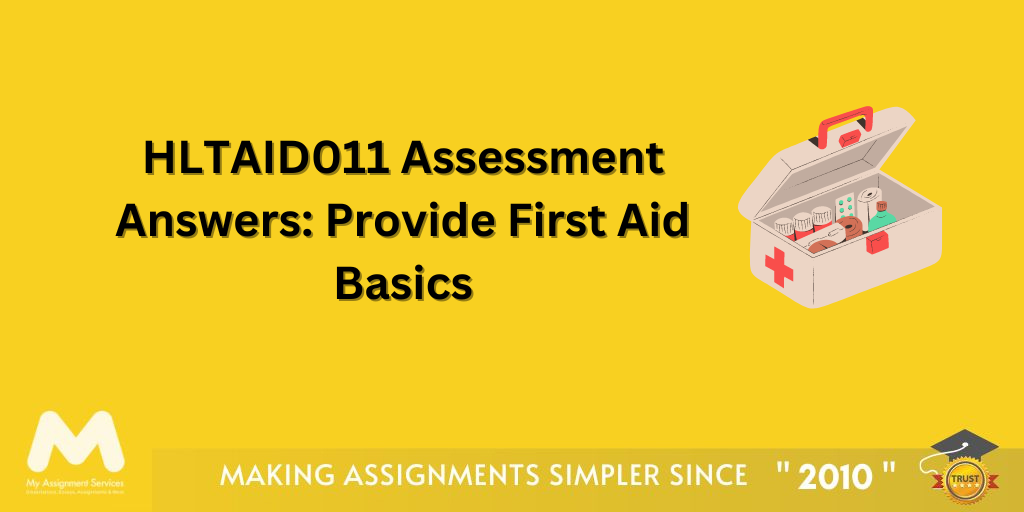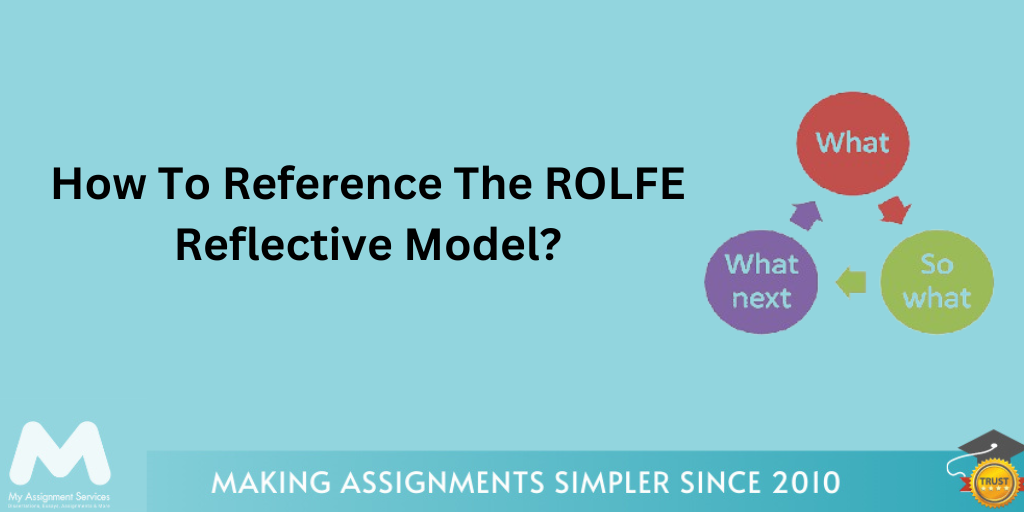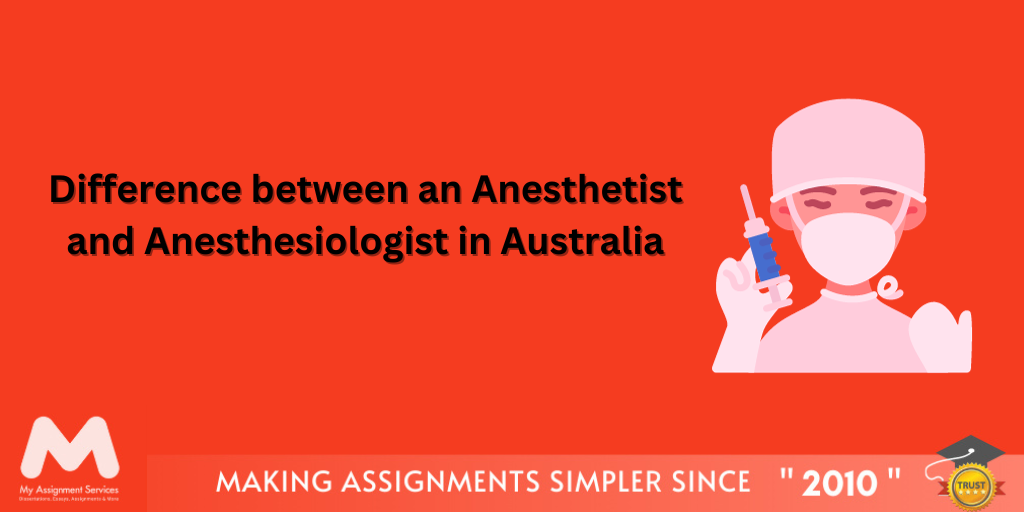
Nursing is a vast subject that encompasses a wide range of studies of processes that promote, protect and enhance healthcare and wellness of an entire community or society. There are various topics that come under the nursing umbrella including administrative nursing studies where students are taught analysing and executing policies to effectively manage healthcare systems in a community. There are various components of nursing as a subject. Let’s take a look at the components of the nursing process to better understand the course curriculum and responsibilities of a nursing student.
- Assessment
- Diagnosis
- Planning
- Implementation
- Evaluation
Because nursing is such a vast subject and its real-world application is huge and important, universities in Australia pay special attention to make the course comprehensive. Nursing assignments are devised to bring out student’s understanding of the different theoretical and practical concepts and skills that will help them provide care to the society and manage the society’s healthcare system. There are three main specialities in Nursing, these are:
Physiology & Anatomy, which is the study of structure and function of the body. According to our nursing assignment help experts, this specialisation outlines the pedagogy and theoretical concepts required to work in the healthcare field. Our anatomy and physiology assignment help experts have in-depth knowledge on specific anatomic terms, anatomical structures and location of organs in the body.
Behavioural Health Nursing: This is a specialised field of nursing that is concerned with mental behaviour, mental health, illness and disorders. According to our mental health nursing assignment experts, Behavioural health nursing involves helping patients with issues such as bipolar disorder, schizophrenia, dementia, depression and psychosis etcetera.
Nursing Ethics deals with the multiple challenges that encircles ethical dilemma in the healthcare field. It is a branch of applied ethics that has four major principles namely autonomy, beneficence, non-maleficence, and justice. Our nursing assignment help experts understand these four principles comprehensively and have written high quality dissertation as well as case studies following these four principles of nursing ethics.
When it comes to starting nursing assignments, students are often perplexed. This can happen because of a lack of understanding of assignment requirements or when the assignment is very complex. However, often the assignments require students to attempt only one question out of two or three topics. This is what confuses students the most. Our nursing assignment help experts can assist the students in selecting the appropriate nursing assignment topic. In the below sample of nursing assignment, the student was asked to review ANZDATA 39th Report chapter 7 ‘Waiting List’ and to develop a critical discussion on the deficit in available kidneys for donation compared to the number of people wait listed for transplantation.
The student was asked to explore concepts that would include, but were are not limited to, ethics, financial incentives for unrelated donors, brain dead versus non-beating heart donors, and/or advances in research including pharmacotherapy or xenotransplantation.
Take a look at the question & solution below to understand our expert’s approach.
Assignment Question
Essay: Choose either Topic A or Topic B
Topic A) Case Study
Please select a patient you know, who is receiving either haemodialysis, peritoneal dialysis or has a functioning kidney transplant. Take a treatment history including noting any relevant dialysis or transplant complications your patient is experiencing, has experienced or could reasonably be expected to experience.
Visit the KHA-CARI Guidelines website at http://www.cari.org.au/guidelines.php, and choose at least two (2) dialysis and transplantation guidelines to review and become familiar with. If you are unable to locate suitable Australasian
guidelines, please access relevant international guidelines. Write a paper in which you respond to the recommendations in these guidelines using your patient as a reference point. Review the
renal replacement therapy the patient is prescribed. Compare this with best practice principles and guidelines for peritoneal dialysis or haemodialysis and transplantation. Provide a well-argued
position within the paper that is supported within the academic literature. To do this effectively you will also need to read widely in the literature to discover possible alternative perspectives in the
wider (global) nephrology community.
or
Topic B) Transplantation: Organ Availability
Review ANZDATA 39th Report chapter 7 ‘Waiting List’
Directions
Develop a critical discussion on the deficit in available kidneys for donation compared to the number of people wait listed for transplantation.
Concepts you may wish to explore might include, but are not limited to, ethics, financial incentives for unrelated donors, brain dead versus non-beating heart donors and/or advances in research including pharmacotherapy or xenotransplantation.
Learning Outcome:
Criterion 1 Demonstrates analysis of issues affecting best practice in renal replacement therapies and,
develops and justifies an argument based on contemporary research literature weighting 20/50
ILOs 1 & 2
Criterion 2 Justifies current clinical practice or makes recommendations for change based on critique of evidence based research weighting 20/50
ILOs 1, 2 & 3
Criterion 3 Writes clearly in an appropriate academic style and structure and backs up claims by referring to academic literature and references accurately using the Harvard style required by the School weighting 10/50
ILOs 1, 2 & 3
Assignment Solution
Kidney Transplantation – Organ Availability and Waitlist
Introduction
Recent years have witnessed an increased demand of organs for transplantation [Stephan A, 2017]. This increase is mainly due to an increased incidence of organ failure [Schefold et al, 2016]. Kidney transplantation is one such transplant procedure that has seen an increased demand owing to its success in curing renal disease [Weimer and Vining, 2017]. Data from Australia and New Zealand Dialysis and Transplant Registry [ANZDATA] shows that the number of deceased donor grafts increased from 499 grafts in 2010 to 633 grafts in 2015 [Huhges J et al, 2016]. This trend is expected to continue into the future, thus creating an ever increasing demand of organs for transplantation.
Over years, kidney transplantation has become a major treatment option for end-stage renal disease [Robinson BM et al, 2016]. The usefulness of kidney transplantation without dialysis is being increasingly recognized as a treatment of choice, wherever feasible [Abramowics D et al, 2015]. Mortality rates of patients receiving kidney transplant have shown a decrease by about 80 percent in the first year over those under dialysis or on waiting list [Matas AJ et al, 2015]. Also, those under dialysis show a 30 fold increase in risk of cardiovascular problems as compared to those with kidney transplant [Sarnak MJ et al, 2003]. Kidney transplant is, therefore, fast emerging as a safe and successful treatment of choice for patients with renal failure. However, it is necessary to be under dialysis, before entering transplant waitlist in Australia.
Also, shortage of organ donors, and an extended time on waitlist for kidney transplantation continues to be a major public health issue. Unavailability of live or deceased donors has led to an increased waiting list time and, subsequently, poorer prognosis for end stage renal disease. Even though the number of active patients on waitlist for kidney transplantation has decreased marginally since 2010; waitlist still remains long and people taken off the list each year remains roughly the same. An insight into the reasons for this and an attempt at strategies to improve the present situation is important to formulate future policies to make kidney transplant waitlist smaller.
National Data on Kidney Transplantation – ANZDATA
ANZDATA collects and summarizes a yearly report of people waiting for transplantation and those who have undergone transplantation in Australia and New Zealand [Australia, NZD, 2016]. The data is collected from all renal units in Australia. This data may be utilized to assess the status of transplantation and waitlist as well as analyze the trends in kidney transplantation. The present analysis is based on data from 2010 to 2015.
Data shows a marginal and gradual decrease in the number of individuals active on the waitlist at the beginning of year from 2010 to 2015. Active individuals in 2010 were 1266. However at the end of 2015, the number of active individuals on waitlist reduced to 1061. The change could mainly be attributed to deceased donor grafts that increased from 499 to 633 in this time period, with number of live donor grafts reducing slightly from 58 in 2010, to 42 in 2015. Number of people opting for grafts from other countries remained 2 in 2015, therefore, did not affect the change in active individuals on waitlist much. The decrease could have been more substantial, had the number of people made active decreased. However, new individuals entering the waitlist increased from 630 in 2010 to 760 in 2015. This increase partially countered the effect of increased transplants over the years. Individuals taken off the list remained similar over these five years. Hence, even though there was a marginal decrease in annual number of active individuals, it may be concluded that the number remained more or less stable over five years from 2010 to 2015.
Data according to ethnicity shows that there was a decrease in waitlist for both indigenous as well as non-indigenous individuals. However, the number of live donations in indigenous population is almost nonexistent. According to age group, the number on waitlist was higher in 45 to 54 as well as 55 to 64 year age group. It was least in 0 to 14 years age group. Number of individuals made active from 55 to 64 years age group increased from 144 in 2010 to 193 in 2015. Even though there was an increase in number of ‘made active’ individuals in all age groups; the increase was particularly peculiar in 55 to 64 year age group. In confirmation with the policies, patients of younger age group are more likely to receive a transplant as compared to the other age groups. There is also a significant amount of difference among the people receiving transplant according to state. However, among all states and age groups, a majority of patients under dialysis were not actively waitlisted at the end of 2015.
Another important parameter of assessing the transplantation waitlist is the transplant rate. Transplant rate is the likelihood of an actively waitlisted patient to receive a transplant. The ANZDATA shows that transplant rate is the highest in Western Australia, and it is also high in pediatric patients as they preferentially receive transplant as compared to the other age groups. Also, the transplant rate is highest in patients with AB blood group. Additionally, in past five years, the median waiting time remained similar, and just like the number of active patients on waitlist, median waiting time showed only a marginal decrease from 2.9 years in 2010, to 2.4 years in 2015.
Overall, the ANZDATA document indicates that the position of kidney transplant has not shown much of change despite an increase in number of transplants. The number of individuals joining the waitlist has increased, and thus leveled off the effect of increased transplants. Also, the median time on waitlist has remained similar. Even though there is a slight improvement in waitlist number and waiting time statistics, this is not likely to make a significant difference in the health status and quality of life of the population under consideration. An improvement in number of transplants as well as reduction of waiting time on waitlist may be necessary for improved health outcomes for individuals, and enhanced public health outcomes for community as a whole.
Discussion
Kidney transplant has been established as evidence based practice and a gold standard for treatment of patients with end stage renal disease. It is highly effective and efficient in managing renal disease, and has lesser risks as well as complications as compared to dialysis. However, it is important to formulate policies and practices to reduce the existing waitlist for kidney transplantation, and also to reduce the waiting time for transplantation.
Ethical and legal framework
The current organ donation policy in Australia is based on ‘opt-in’ framework, where an active consent is required from donor in order to donate organs. Organs cannot be obtained from a deceased individual without consent during his/ her life to do so after death. In contrast an ‘opt-out’ policy presumed consent for organ donation unless an individual actively opts out or denies posthumous use of the organs [Rees M, 2011]. Opt out or a presumed consent is currently followed as a norm in countries like Spain. This approach has led to an increased availability of organs for transplantation. A debate on such an approach in Australia may be helpful in decreasing organ shortage, and in reducing waitlist. However, ethical implications of this approach should be discussed and should be a part of nationwide debate.
Educational approach
An increased public awareness about the people on kidney waitlist and their requirements, as well as how their quality of life may be improved by organ donation may go a long way in increasing kidney donations [Skelton SL et al, 2015]. Educational approach has an advantage of helping people make an informed decision, and motivating them to donate organs at their will. Explaining people how their actions may be lifesaving as well as life changing for others is an important way to reduce waitlist, not only for kidney transplat patients, but for other organs as well.
Improved clinical governance
Many prospective donors are lost due to lack of knowledge of staff about their roles and responsibilities pertaining to organ donation. Improved clinical governance, where the hospital and emergency staff are well versed with protocols concerning organ donation will help loss of organs that may be donated. Emergency staff should be well trained to work actively for preserving organs of an individual whose recovery is otherwise not possible, and who has consented for organ donation, or the family is ready for it [Cohen JM et al, 2016]. Proper protocols and interdepartmental coordination is necessary for such approach. Administrative integration, proper communication and training on protocols will be helpful in ensuring that usable organs do not go waste.
Hospital based medical and nursing specialists
An increased role and more persuasive approach by transplant coordinator nurses may be a key part in improving transplant waitlist. Also, an extended community based role of coordinator nurses in regions of high waitlist like NT will be helpful in improving kidney donation and hence reduction in waitlist as well as waitlist time [Turner K et al, 2014]. Hospital based nursing transplant specialists may be given additional responsibilities in view of lack of time with medical specialists. Transplant coordinator nurses should be adequately trained in coordinating transplants effectively and improving donor status. Such an extension of roles and responsibilities as well as training will make a better coordinated and efficient management of kidney transplant waitlist [Shemie SD and MacDonald S, 2014].
Improved financial support for hospitals taking up donation actively
Deceased organ donation is usually not a commonplace event in hospitals. Being a rare event, most of the hospitals do not consider it as a core part of their business strategy. Another reason for not promoting organ donations is that it needs planning and pre budgeted procedural framework for execution. Most of the hospitals are not equipped for this. Hospitals, therefore, see organ donation as an additional work. Since most of the hospitals do not get paid for this activity, interest in actively promoting organ donations is low. Financially reimbursing hospitals for organ donations will help a long way in making hospitals work towards this goal more actively [Hoste P at al. 2016]. Per case funding to the hospitals, or partial funding for manpower requirement will help reduce financial burden of the hospitals, if not completely alleviate it. Thus, hospitals may use their funds for training and motivation of prospective organ donors and families. Hence, a two pronged action may result from financially empowering hospitals for organ donation.
International cooperation
Sharing expertise and learning from various countries worldwide on their organ donation approach will help in better understanding of successful approaches worldwide. Successful approaches may be implemented in Australia. These may involve working in close coordination internationally with administrative systems. Additionally, clinical and process training from countries that have successfully reduced transplant waitlists and time on waitlist may prove to be helpful in reducing waitlist in Australia if effectively planned and implemented. Such international cooperation would involve contacts and working together at government, university and hospital levels. Adopting and incorporating desirable changes from best practices internationally will make Australian system more efficient.
Cross cultural sensitization
Australia is a diverse society. Indigenous, non-indigenous and immigrant populations have specific cultural beliefs. Some of these beliefs may be detrimental to organ donation and transplantation. Working at a community level for cross cultural sensitization and social engineering for a positive attitude toward organ donation will help to increase the number of prospective donors in the future [Gordon EJ et al, 2016]. Recruitment of various community based specialist counselors or training of existing public health manpower to take up this role will be required for effecting adequate community sensitization to bring about a change in attitude toward organ donation.
Conclusion
Data on kidney transplant waitlist for past five years has shown an inability of current policies and approaches to reduce the number of individuals on waitlist, as well as time on waitlist. Even though a preventive approach on kidney diseases may be helpful in reducing the incidence of disease, but a major approach in managing kidney transplant waitlist in future should be an increased availability of organs. Organ donation, and deceased organ donation is a major source of organs for renal transplant. Introducing innovative approaches and new policies aimed at increased organ donation will hold the key to reduced waitlist number and time in the future.
References
Abramowicz, D., Hazzan, M., Maggiore, U., Peruzzi, L., Cochat, P., Oberbauer, R., ... & Maggiore, U. (2015). Does pre-emptive transplantation versus post start of dialysis transplantation with a kidney from a living donor improve outcomes after transplantation? A systematic literature review and position statement by the Descartes Working Group and ERBP. Nephrology Dialysis Transplantation, 31(5), 691-697.
Australia, N. Z. D. (2016). Transplant Registry (ANZDATA). 38th Annual Report. www. anzdata. org. au/v1/report_2015. html.
Cohen, J. M., Young, M., O’Young, B., & Stiens, S. A. (2016). Organ Transplantation and Rehabilitation: Process and CHAPTER Interdisciplinary Interventions. Medical Aspects of Disability for the Rehabilitation Professional, 415.
Gordon, E. J., Reddy, E., Gil, S., Feinglass, J., Rodde, J., Abecassis, M. M., & Caicedo, J. C. (2014). Culturally competent transplant program improves Hispanics' knowledge and attitudes about live kidney donation and transplant. Progress in Transplantation, 24(1), 56-68.
Hoste, P., Ferdinande, P., Hoste, E., Vanhaecht, K., Rogiers, X., Eeckloo, K., ... & Vogelaers, D. (2016). Recommendations for further improvement of the deceased organ donation process in Belgium. Acta Clinica Belgica, 71(5), 303-312.
Hughes, J., Walker, C., Kara, T., McDonald, S., Jose, M., Rosman, J., ... & Palmer, S. (2016). Exploring data custodianship, ownership and governance within the Australia and New Zealand Dialysis and Transplant (ANZDATA) Registry. In Nephrology (pp. 204-Vol).
Matas, A. J., Smith, J. M., Skeans, M. A., Thompson, B., Gustafson, S. K., Stewart, D. E., ... & Israni, A. K. (2015). OPTN/SRTR 2013 annual data report: kidney. American journal of transplantation, 15(S2), 1-34.
Rees, M. (2011). Presumed consent for organ donation. The Annals of The Royal College of Surgeons of England, 93(7), 565-565.
Robinson, B. M., Akizawa, T., Jager, K. J., Kerr, P. G., Saran, R., & Pisoni, R. L. (2016). Factors affecting outcomes in patients reaching end-stage kidney disease worldwide: differences in access to renal replacement therapy, modality use, and haemodialysis practices. The Lancet, 388(10041), 294-306.
Sarnak, M. J., Levey, A. S., Schoolwerth, A. C., Coresh, J., Culleton, B., Hamm, L. L., ... & Parfrey, P. (2003). Kidney disease as a risk factor for development of cardiovascular disease. Circulation, 108(17), 2154-2169.
Schefold, J. C., Filippatos, G., Hasenfuss, G., Anker, S. D., & von Haehling, S. (2016). Heart failure and kidney dysfunction: epidemiology, mechanisms and management. Nature Reviews Nephrology, 12(10), 610-623.
Shemie, S. D., & MacDonald, S. (2014). Improving the process of deceased organ and tissue donation: a role for donation physicians as specialists. Canadian Medical Association Journal, 186(2), 95-96.
Skelton, S. L., Waterman, A. D., Davis, L. A., Peipert, J. D., & Fish, A. F. (2015). Applying best practices to designing patient education for patients with end-stage renal disease pursuing kidney transplant. Progress in Transplantation, 25(1), 77-90.
Stephan, A. (2017). Organ Shortage: Can We Decrease the Demand?. Experimental and clinical transplantation: official journal of the Middle East Society for Organ Transplantation, 15(Suppl 1), 6.
Turner, K., & Burns, T. (2014). The role of a renal transplant recipient coordinator in a non-transplanting unit. Transplant Journal of Australasia, 23(3), 7.
Weimer, D. L., & Vining, A. R. (2017). Policy analysis: Concepts and practice. Taylor & Francis.
Blake, from Australia, communicated with our customer’s relation team by sending his enquiry on WhatsApp. Our expert contacted Blake and undertook the assignment instantly. It was a 2000 word assignment, which our expert delivered in 24 hours. Blake took a day to review the assignment and asked for a few minor additions to be made in the assignment. Our expert gladly re-worked on the section Blake asked and gave it to our dedicated the quality analyst team for a thorough quality standard check. Our team delivered the assignment to Blake three days before the final date of submission. Blake received a High Distinction in his assignment and since then, he has recommended us to quite a few colleagues.
Related Study Materials
Our Experts can answer your Assignment questions instantly.
Ask Question0 Comment
Get It Done! Today
1,212,718Orders
4.9/5Rating
5,063Experts













Loved reading this Blog? Share your valuable thoughts in the comment section.
Add comment